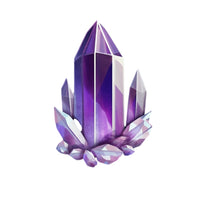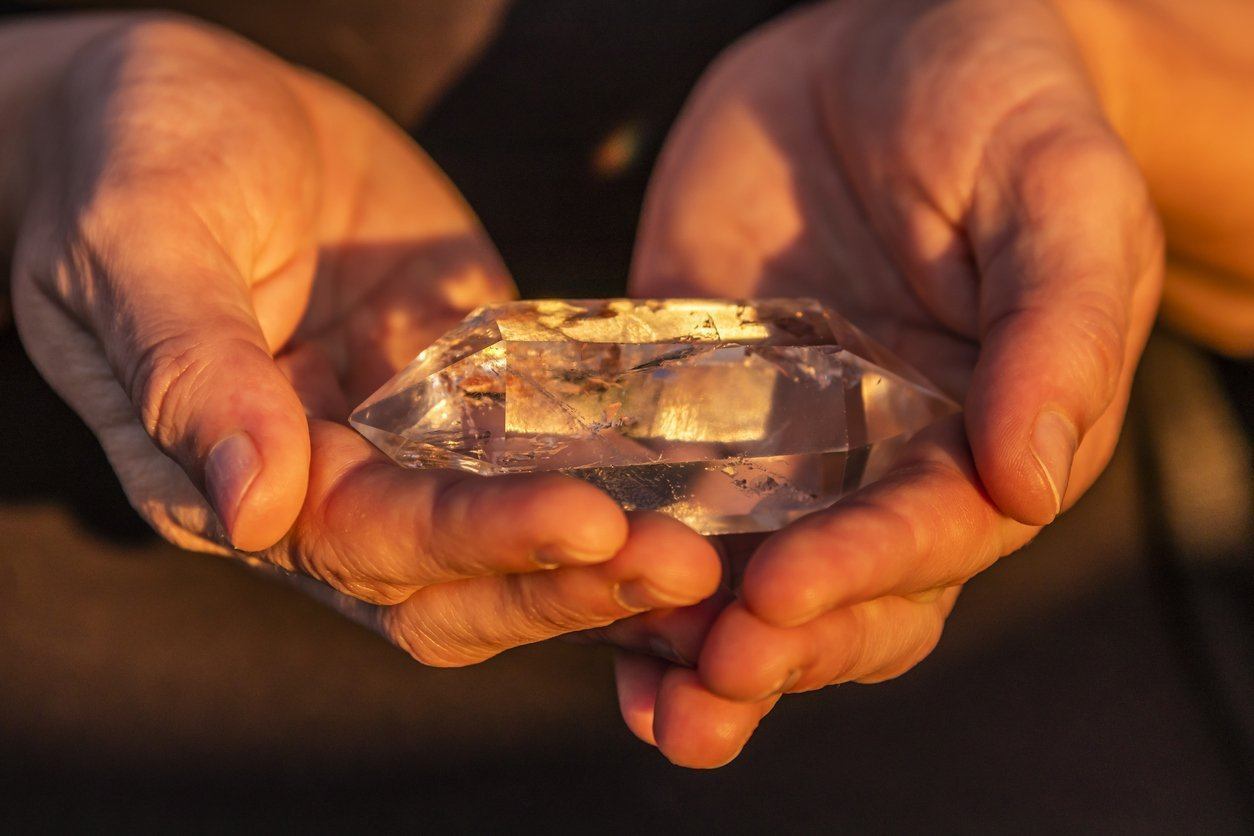Do you know semi-transparent crystals fade in the sun? That’s just a general explanation. The truth is, the basic chemistry of a crystal leads it to fade under sunlight. That’s why today I have combined a list of 13 crystals that can’t be in the sun and the reasons why it happens. If you’re a curious kitty like me, you will love the list of crystals that don’t fade in the sun that I’ve included too.
What Happens to Crystals that Are Kept in the sun?

Every time you treat a crystal to sunlight, it retains the heat and warmth of the sun. This is applicable for warm crystals. On the contrary, cold crystals when they get warmed in the sun, end up losing their cold counterparts to the warm sunlight.
In fact, most transparent crystals are cold. Don’t keep translucent crystals in the sun too. If you’re still pondering, just bookmark this post and refer to it whenever you’re working with the solar energy for healing crystals. Got it? Ask us your doubts in the comments below.
Do Crystals get Overcharged in the Sun?
Can you boil the water too hot? Heck Ya!
While every matter has a solid boiling point, after which the temperature means the same, crystals are almost the same. The ideal time to charge a crystal in the sun is 6 to 12 hours. However, a few healing crystals are so sensitive, they can’t be outside in the sun for even 30 minutes. So, if you have a healing crystal that can’t be in the sun as our list specifies, it is best to avoid keeping it out for solar infusion.
When a crystal is kept at 900angle to the sun, it focuses the energy of the sun leading to a point of heating. This is why crystals such as pyramids and spheres are the worst to charge in the sun. Don’t ever keep it in the sunlight. Instead, go for moon infusions when you’re working with crystal balls and pyramids or pendulums.
While overcharging of crystals is rare, it’s not as if it can’t happen. I have personally seen my feng shui crystal of rose quartz bursting into a million pieces. Thankfully, a new energy was not the culprit, but the overcharging for 3 years without cleansing was.
Today, I don’t let any crystal, feng shui or otherwise be in the sun or anywhere for more than 7 days. I have a calendar noting the placement and date of placing the crystal in every corner of my house. The same holds true for my crystal grid too.
List of 13 Crystals That Can’t be in the Sun
 Which gemstone must not be kept in the sun?
Which gemstone must not be kept in the sun?
Why not keep certain crystals in the sun?
What happens when you keep a topaz in the sun?
How does a sapphire react under the sun?
Find out answers to all your questions below.
· Fluorite Fades in the Sun
As fluorite is made of fluorspar or calcium fluoride, it reacts heavily under sunlight. It is advised not to keep the crystal under the sun for more than 15 minutes. Exposing to the sun will also make fluorite extremely hot.
· Amethyst Shouldn’t Be In Sun
Amethyst is made of Silicon and oxygen, in addition to trace impurities of iron that gives the purple stone its distinct color. When amethyst is exposed to UV light, it leads to fading of the deep purple or violet tones of the crystal.
· Sunlight Fades Opal
Scientifically, opal is the hydrated amorphous silica with water content up to 21%. When exposed to sunlight, opal loses its color that cannot be retained. On the flipside, it is okay for an opal to get wet.
· Citrine Cannot be in Sun
The yellow variety of quartz, citrine is made of Silicon and oxygen with a hardness of 7. When a transparent citrine crystal is kept in the sun for longer than 4 hours, it fades to form clear quartz. Don’t keep citrine in the sun.
· Sunlight on Quartz
Another silicon-oxygen tetrahedral structure is quartz. Do not leave your clear quartz out in the sun for more than 2 hours. It will become brittle and break into pieces! Dark colored quartz easily loses its color within a few minutes of midday sun exposure!
· Turquoise under the Sun
Composed of Copper, Aluminum, polonium, and water in addition to oxygen, turquoise can react vigorously in water and in sun. Moreover, if the seasonal changes are drastic in your area, turquoise can lose almost all its color in the summers.
· Sun Fades Aquamarine
Composed of Beryllium, Aluminum, Silica and Oxygen, aquamarine can quickly fade into white if kept in the sun for long hours. Although aquamarine is heated to remove the green color, direct sunlight can fade the beautiful blue shade of the stone.
· Rose Quartz Fades under Sunlight
As rose quartz is basically quartz originating from Brazil fades the most. So, be sure to trace the origin of your pink quartz before you keep it out in the sun. Also, pink quartz fades, but rose quartz often doesn’t. It is a photo-sensitive crystal!
· Celestite Loses Color in the Sun
Made from Strontium Sulfate, Celestite changes from blue to white if you keep it in the sun for long. This is because UV rays break the bonds of celestite and bleach its color. As celestite is a fragile stone, with the fading of the color the strength of the stone also decreases, leading to easy breakage!
· Sapphires Must not be in the Sun
A type of mineral corundum, sapphires are composed of Aluminum and Oxygen atoms. It also contains copper, magnesium, titanium, and iron in traces too. When kept under direct sunlight for long, sapphires will lose its blue, pink and yellow colors quickly.
· Keep Kunzite Away from Sunlight
Made of Lithium, Aluminum, Silicon oxide, and oxygen, kunzite is a gemstone that quickly becomes white under sunlight. Ultraviolet rays in the sunlight will cause kunzite to fade even if it fades slower than an amethyst or citrine. So, be aware when you’re wearing kunzite to the beach.
· Sun Exposure Fades Topaz
Although topaz has the most stable of colors when compared to other stones in sunlight, it fades if you keep a topaz in direct sunlight for more than 8 hours. Yellow topaz will become brown and deep yellow topaz will become a maroon shade when kept in the sun.
· Smoky Quartz Loses Color under the Sun
Just like other quartzes, smoky quartz loses its color to become grey or brown. When kept in a glass case, smoky quartz will not lose color as the glass blocks UV light.
What are the Crystals that do not Fade under Sunlight?
Crystals that do not lose color under the sun are:
- Morganite
- Malachite
- Howlite
- Lapis Lazuli
- Jade
- Labradorite
- Black Onyx
- Black Obsidian
- Sunstone
- Tourmaline
Before you go …

Fading of colors in a crystal is a natural reaction. Always remember that crystals were underground, away from UV rays before they landed in your hands. It is best to infuse sun energy in your gemstones for not more than 8 hours.
Hence, if your crystal is opaque it is okay to leave it out in the sun; however, transparent stones can’t be in the sun for long. Photo-sensitive crystals are best exposed to the sun for under three minutes. Avoid soaking any stone for more than 12 hours at a maximum. Even if your stone is resistant to sunlight, it can fade over time!
Did your crystal lose energy because it faded in the sunlight? Ask your questions below to find answers.
More Relevant Topics
- What Happens If Your Crystal Breaks or Fades
- What is the Meaning of My Crystal Changing Color?
- 9 Forgotten Benefits Of Amethyst Rings And Pendants



Leave a comment